

Introduction
This guide contains everything you need to know about thread rolling and screw machine products.
You will learn about topics such as:
What is thread rolling?
Thread rolling processes
Advantages and disadvantages of thread rolling
Common defects
Types of thread rolling machines
And much more…
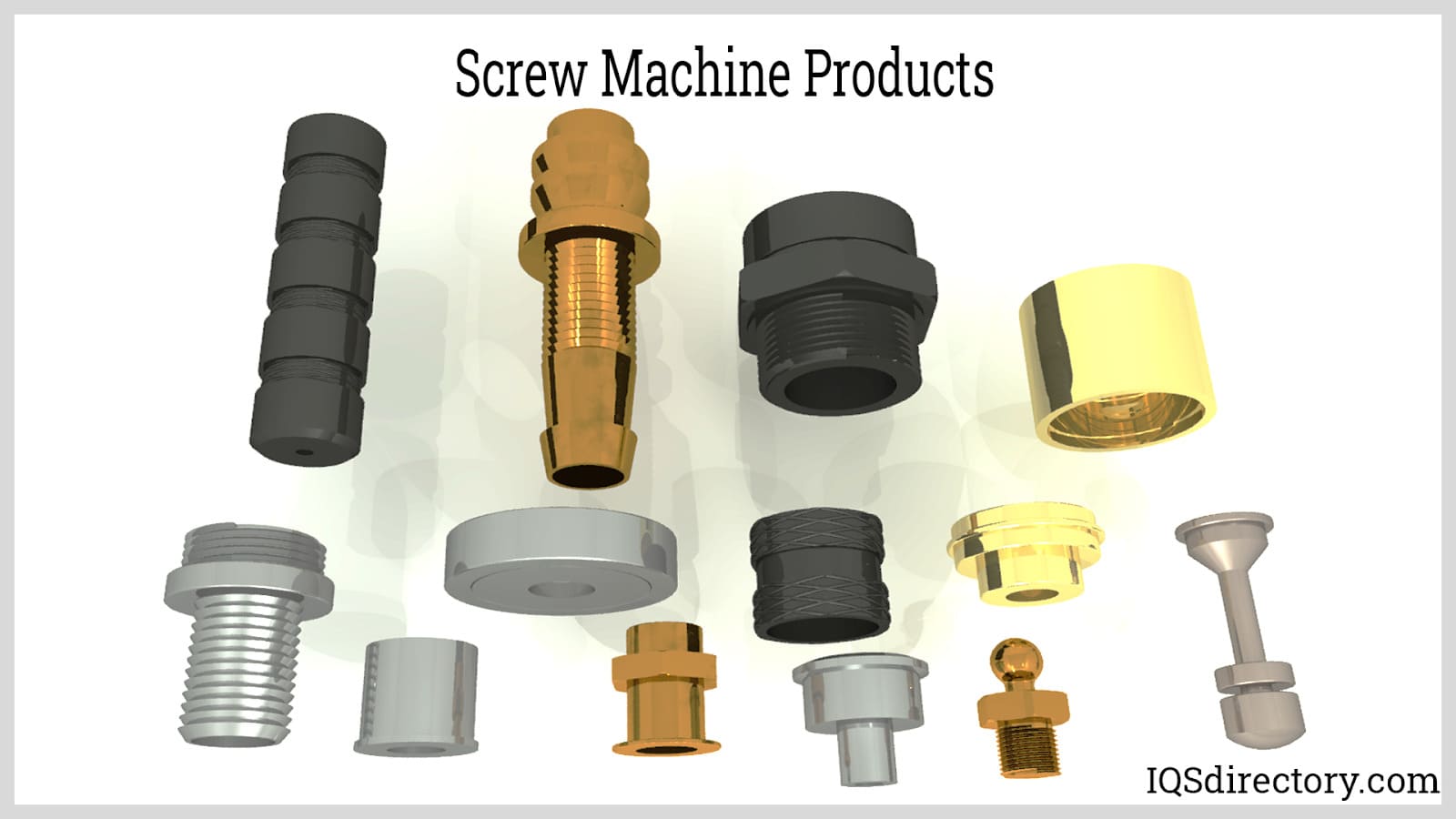
Chapter 1: What is Thread Rolling?
Thread rolling is a type of threading process which involves deforming a metal stock by rolling it through dies. This process forms external threads along the surface of the metal stock. Internal threads can be formed using the same principle, specifically termed thread forming. In contrast with other widely used threading processes such as thread cutting, thread rolling is not a subtractive process. This means it does not remove metal from the stock. The rolled threaded fasteners offer advantages such as stronger threads, precise final dimensions, good surface finish, and a lower coefficient of friction.
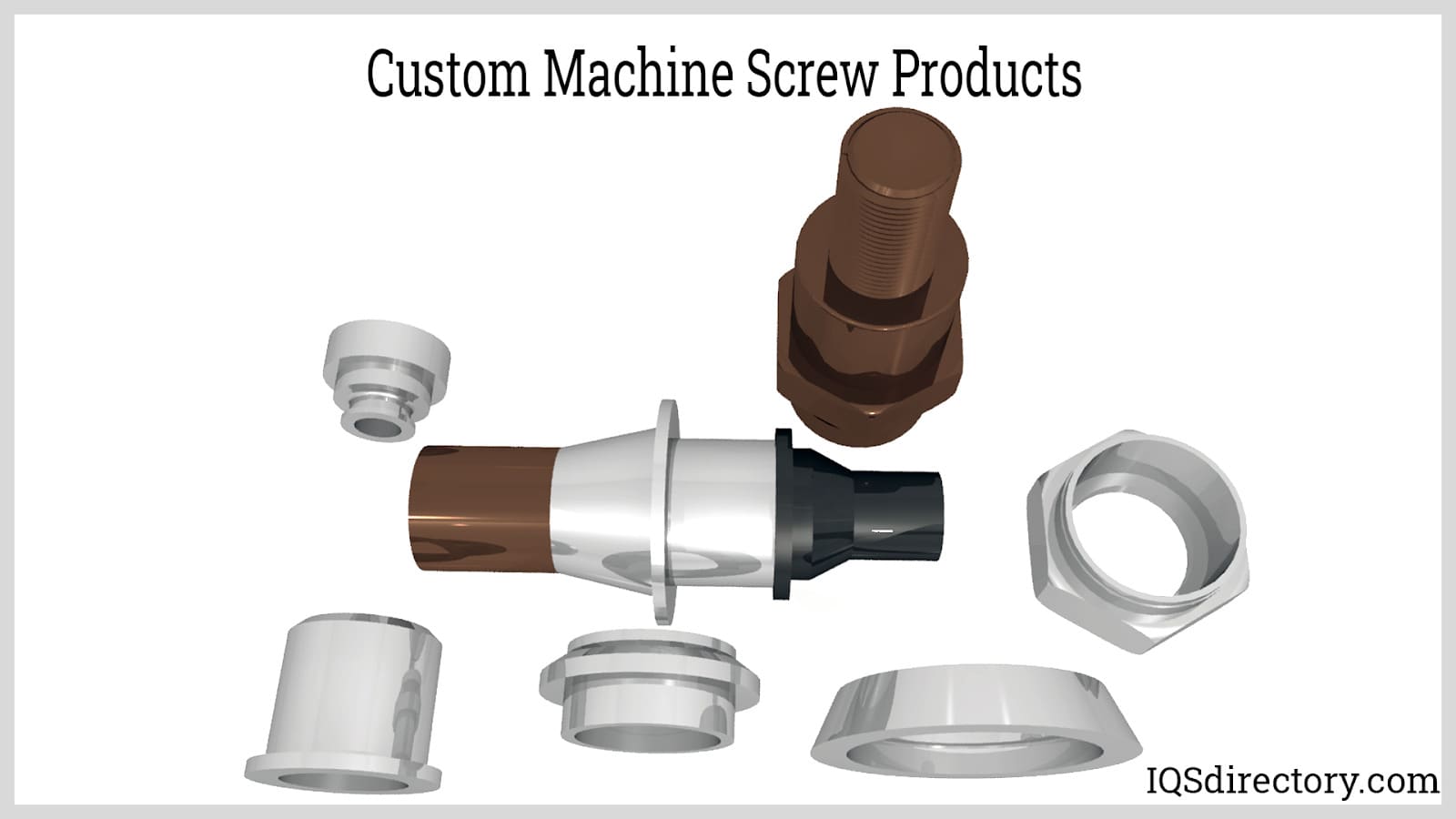
Screw machine products are threaded machine elements such as bolts, nuts, and screws. Threaded machine elements can be grouped according to their function. Bolts, nuts, and screws are structural components called fasteners. Threaded fasteners can also be integrated to the part making threaded fittings.
Threaded fasteners create non-permanent joints which can be loosened or dismantled through mechanical action. Power screws and lead screws are considered mechanisms or mechanical drives. These machine elements control movement and transmit power to other machine parts.
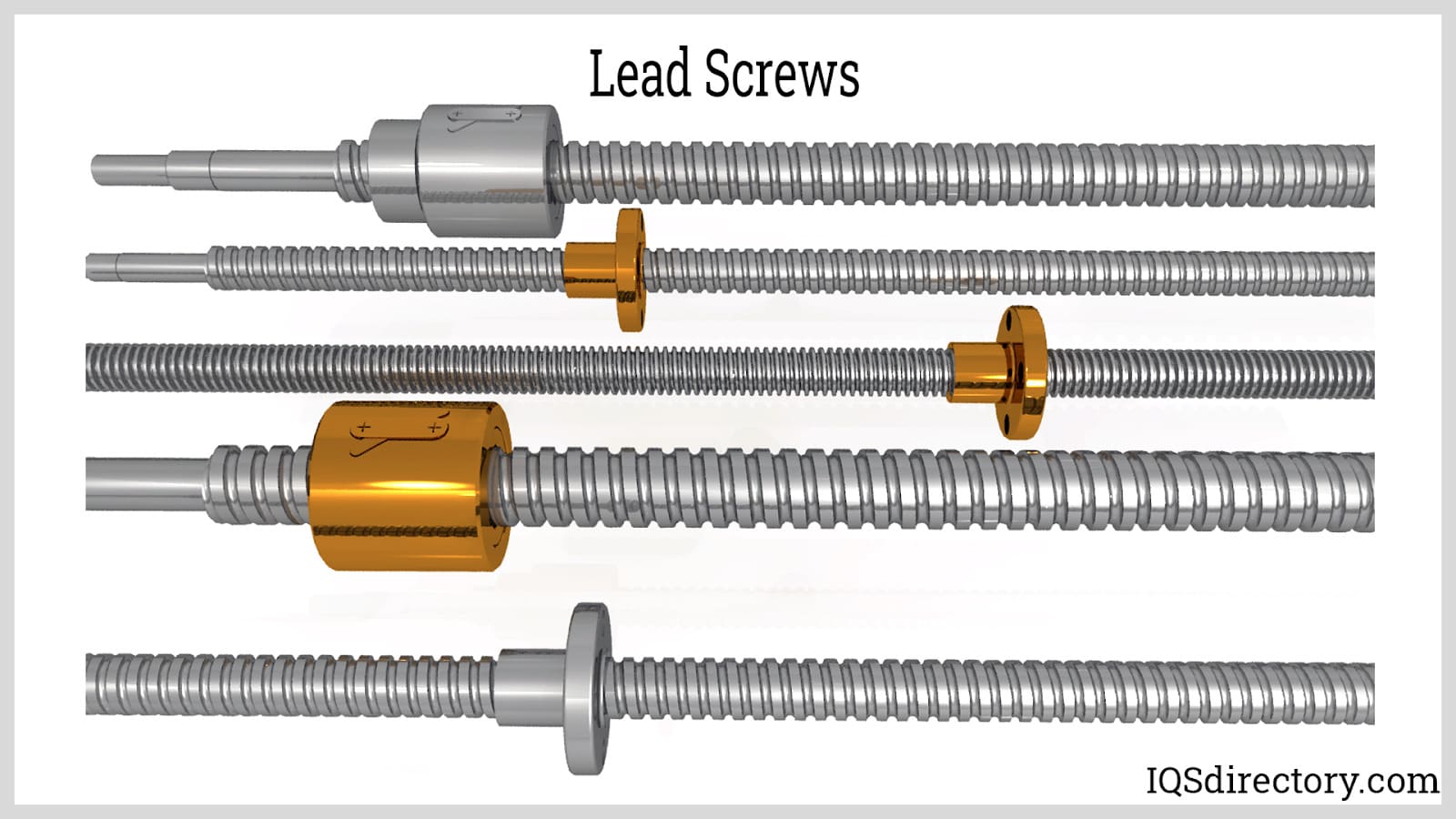
Screw Thread Forms
Screw threads can be classified according to their form.
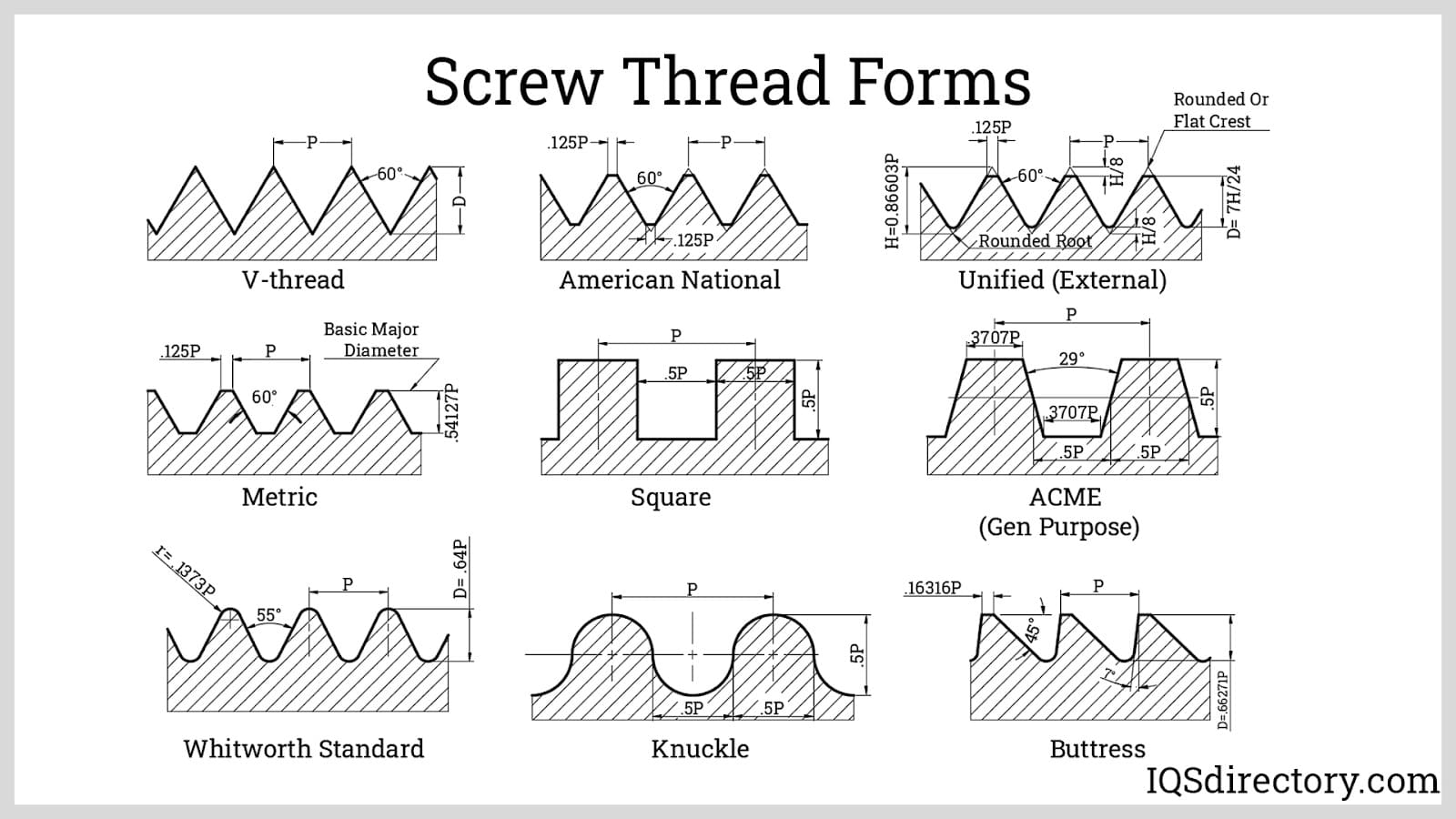
V-Thread: These are triangular threads with flanks that typically form 60° with each other. The crests and roots are sharp, but in some cases, as a small flat portion due to limitations in fabrication.
American National Thread: Formerly known as the United States Standard Screw Thread, the American National Thread is a more standardized version of the V-thread which has specific dimensions to the flatness of the crests and roots of the threads. This form replaced the V-thread for general use.
British Whitworth Thread: This was the British counterpart of the American National Thread.
Unified Thread: This thread form replaced the American National Thread along with thread standards from Canada and Britain. This was developed to allow interchangeability of parts. Unified threads still have the V-shape profile but with rounded or flat crests and roots. The Unified Thread Standard (UTS) consists of series, namely, Unified Fine (UNF), Unified Coarse (UNC), Unified Extra Fine (UNEF), and Unified Special (UNS).
Metric Thread: This thread form was developed to transition from the imperial-based measurement into the metric system. This was brought by the ISO, displacing the UTS thread form.
Square Thread: Square threads are special-purpose threads used for power transmission. Theoretically, they are the ideal thread for mechanisms and drive applications due to the perpendicularity of the load-bearing faces or flanks with the axis. However, this form is not practical due to manufacturing limitations.
Acme Thread: This thread form is a modification of the square thread. The acme thread is characterized as having a trapezoidal form with a narrower root than its crest. Acme threads are stronger and easier to machine than square threads.
Buttress Thread: In this thread form, one flank is perpendicular or with a slight angle with the axis while the other has a 45° angle. This thread form is designed to transmit high loads in one direction.
Knuckle Thread: Knuckle threads have highly rounded crests and roots with a flank angle of 30°. The rounded profile allows debris to be shifted to not interfere with the meshing of the threads.
Chapter 2: Overview of Threading Processes

The processes of generating threads are generally classified into three methods: subtractive, deformative, and additive. These differ on how the thread is shaped or formed. Subtractive processes are generally known as cutting processes. These processes are summarized below:
Tapping: Tapping is a thread machining process for producing internal threads. This is done using a tap which is a cylindrical or conical cutting tool. The tap has multiple cutting edges similar to an external thread. The internal thread is generated by rotating the tap while axially moving it deeper into the bore of the metal stock.
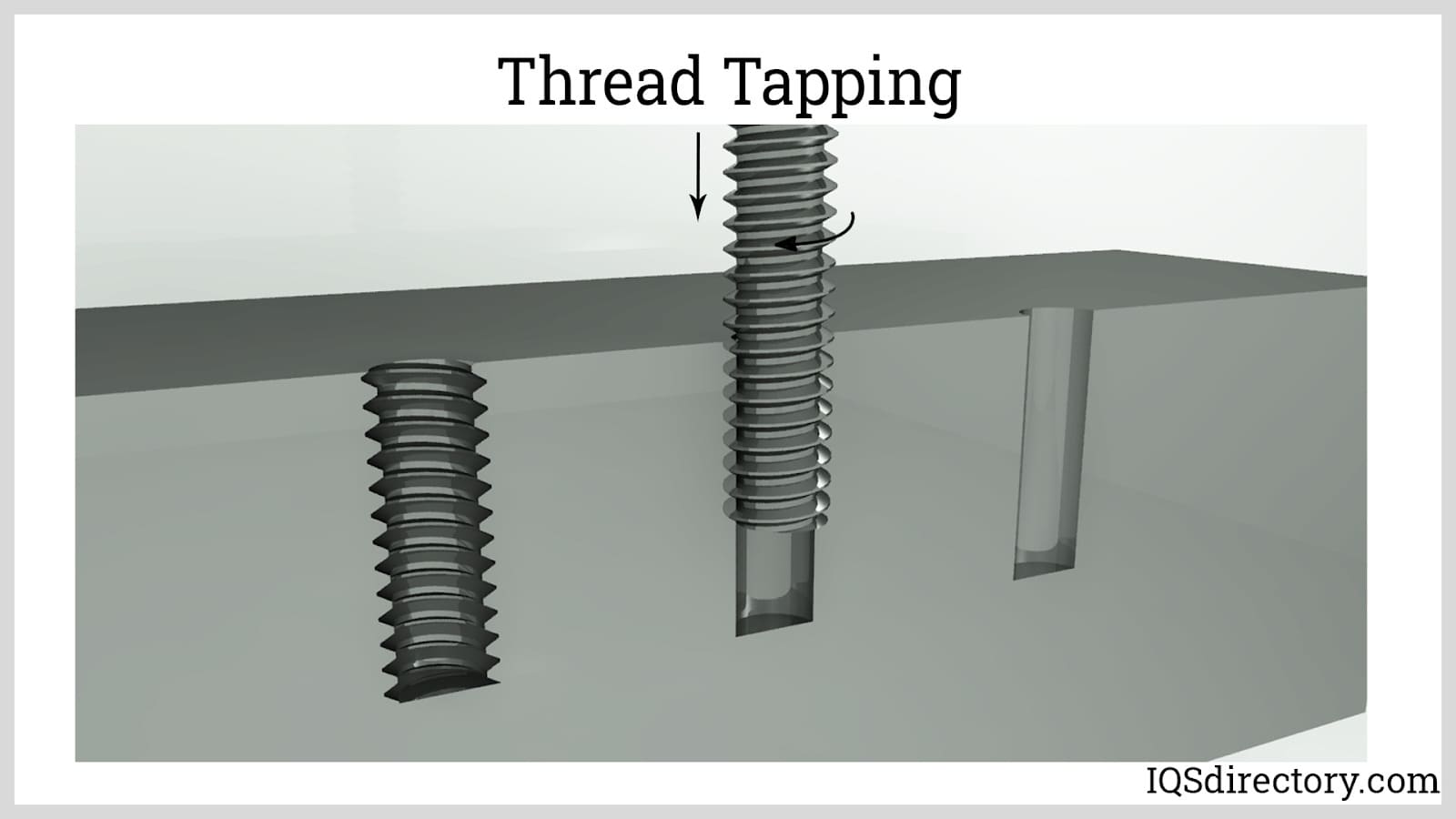
Die Threading: This process is used to produce external threads. Its method of applying force and cutting action is similar to tapping. A die is used to cut the metal stock with multiple cutting points similar to an internal thread. Different die designs exist which can be solid or self-opening.
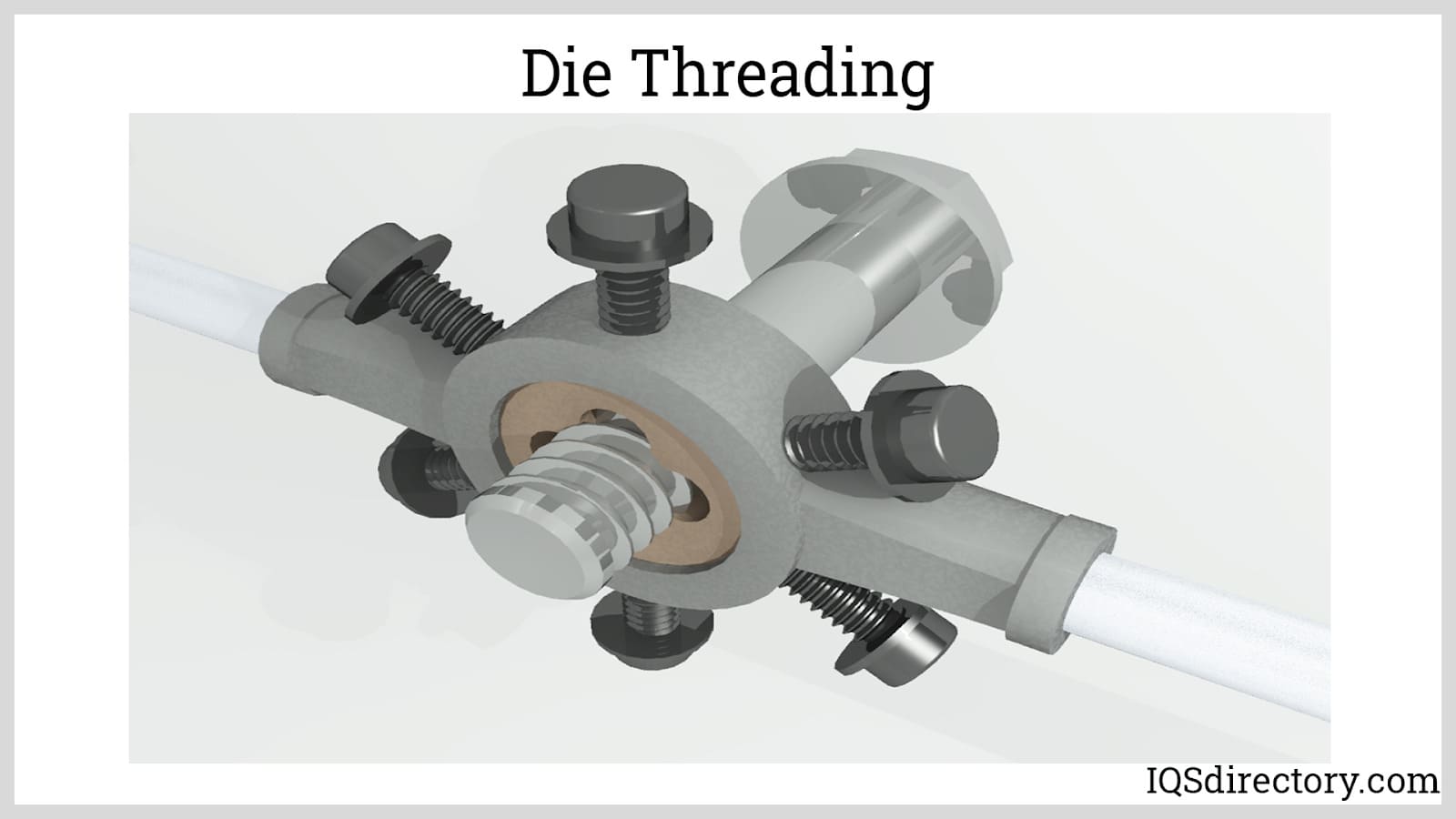
Single-point Cutting: Single-point cutting is done in a lathe machine where the metal stock is held and rotated. The cutting tool is mounted on a carriage fed linearly by a lead screw. This process can produce both internal and external threads. This process is slower than tapping or die-cutting. Its advantage is that only one cutting tool is required to produce different threads.

Chasing: This process uses a tool called a thread chaser which is several single-point cutting tools fitted together. The chaser is typically mounted on the carriage of a lathe which is indexed gradually to cut the thread.
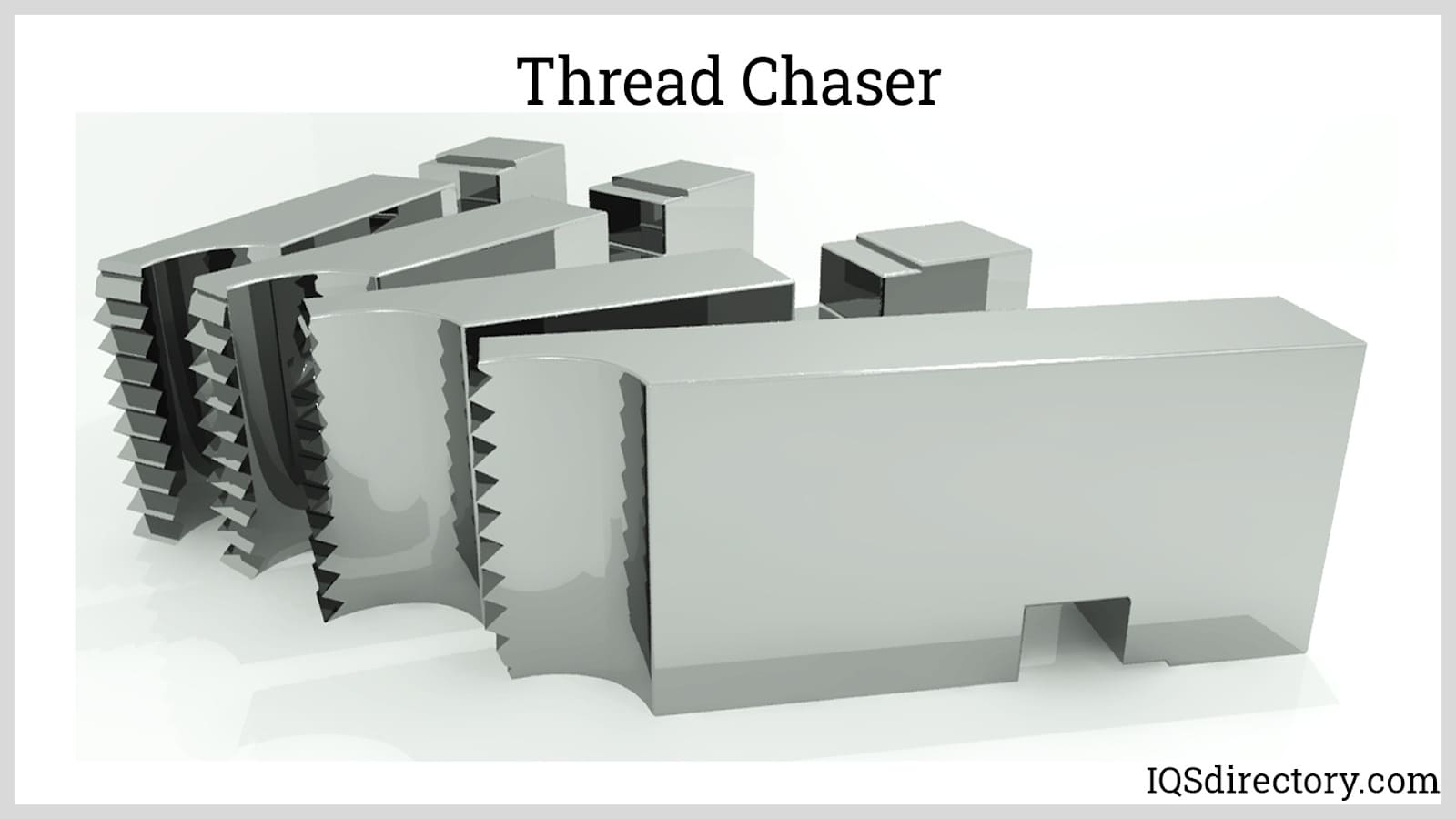
Milling: In this process, single or multiple rotary cutting tools are used to thread the stock. Aside from rotating the cutting tool and indexing it axially as seen in tapping and die-threading, the cutting tool is also revolved along the circumference of the threaded surface. Thread milling can generate both internal and external threads.
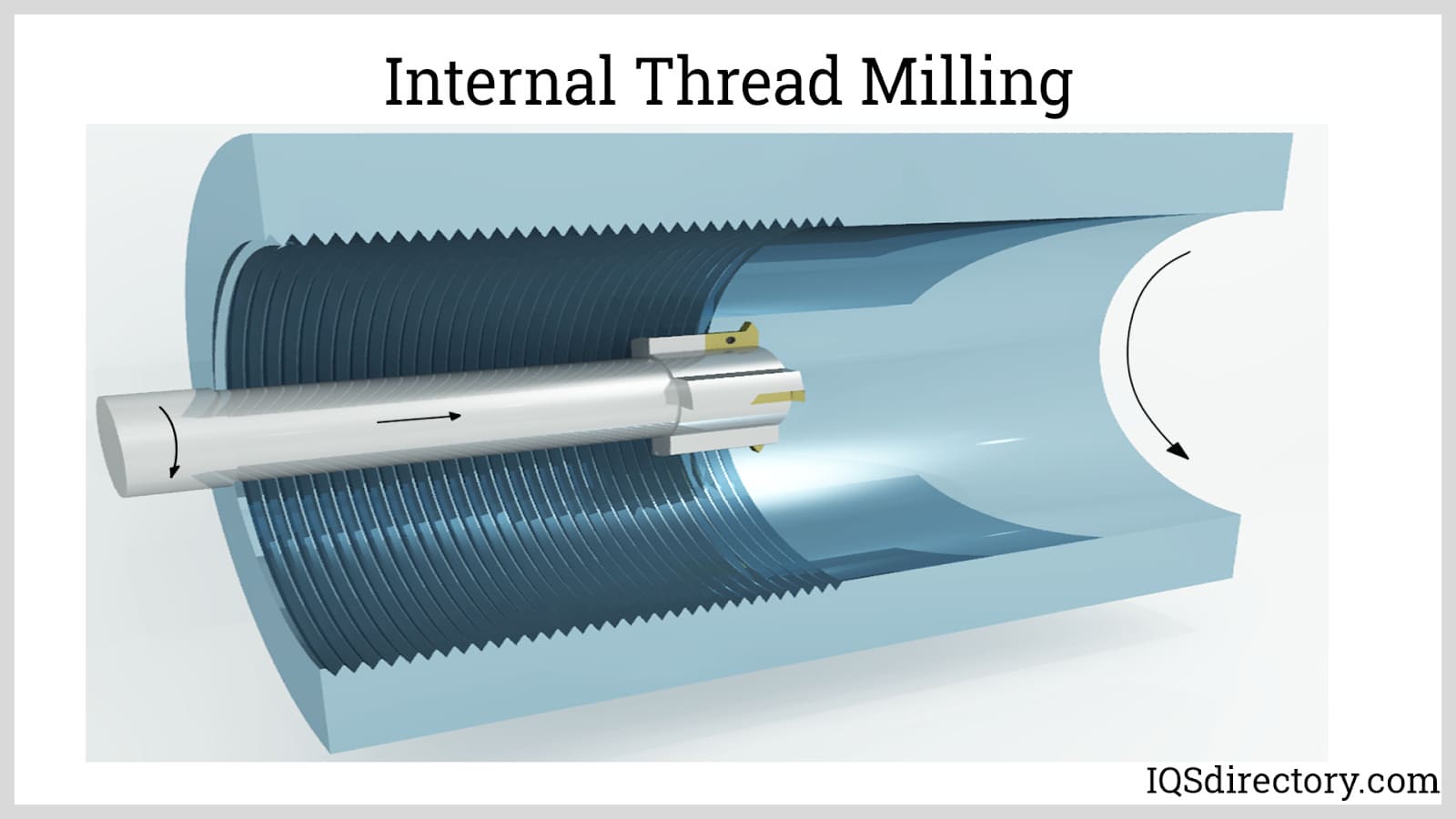
Grinding: Instead of cutting the stock, this process uses abrasive tools to remove metal. This is usually done in conjunction with other threading processes. Thread grinding is done to produce precision threads and threads with a good finish.
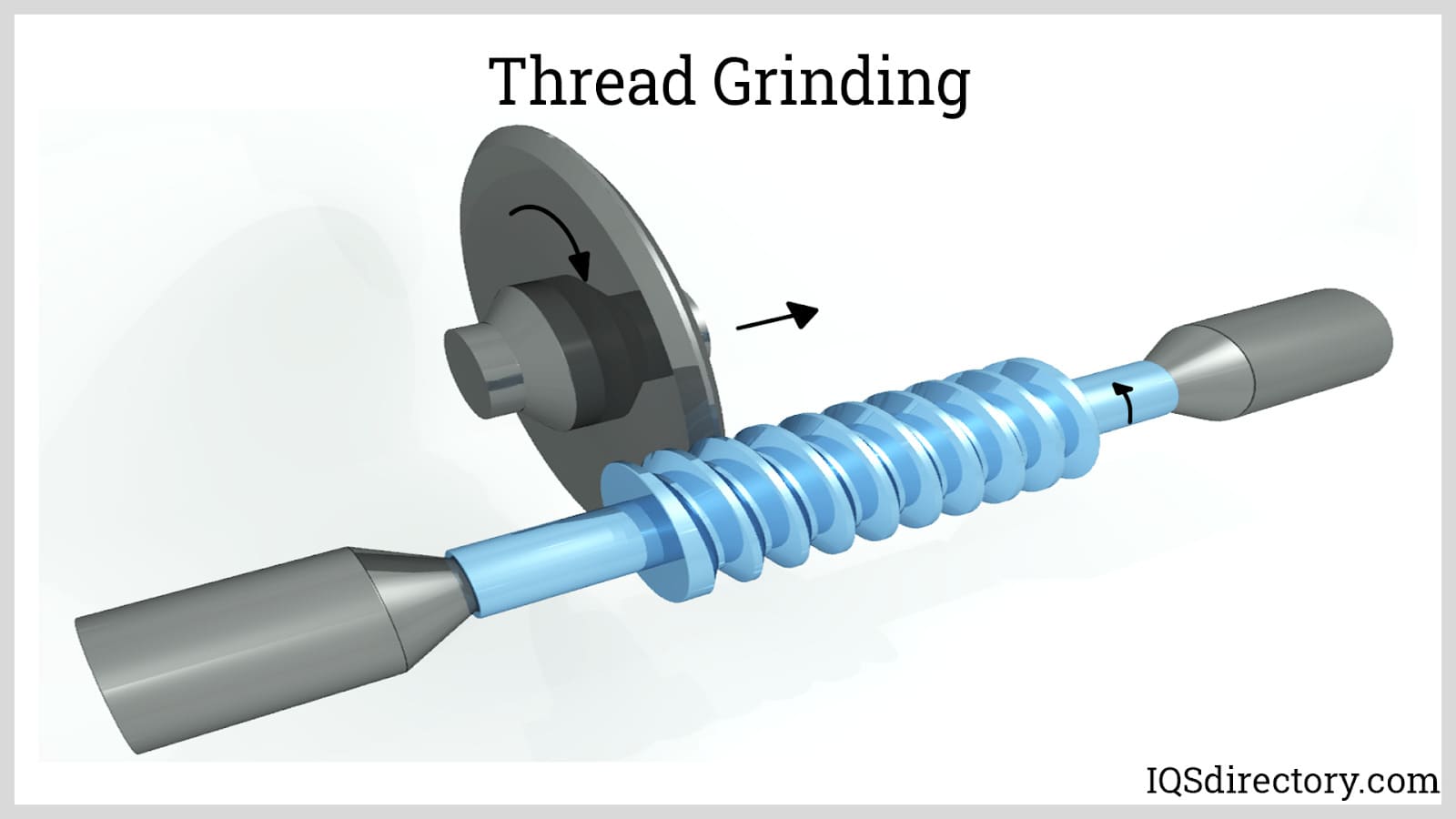
Deformation processes generate threads by working the metal stock to form its shape. This classification includes rolling and casting:
Rolling: As mentioned earlier, thread rolling is an external threading process that shapes the stock by passing it through roller dies. The roller dies have external thread-like rollers which contact and deform the surface of the stock. Thread rolling is generally faster than thread cutting since the shaping process only requires few passes.
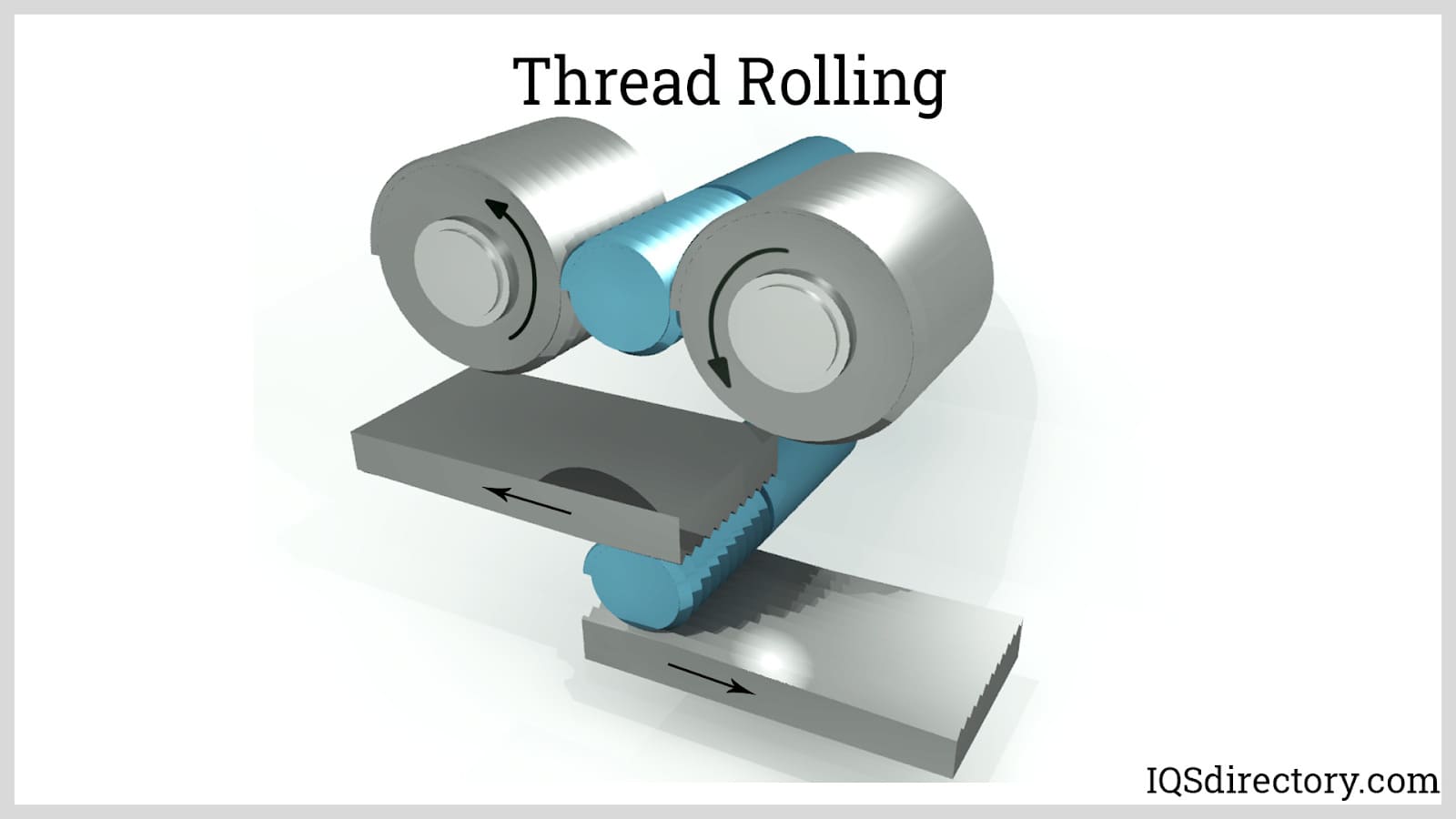
Casting: This process involves pouring or injecting the molten metal into a die or mold. The die contains the negative shape of the threaded part. This process requires secondary machining processes to produce accurate threads. This process is not suitable for making fine threads.
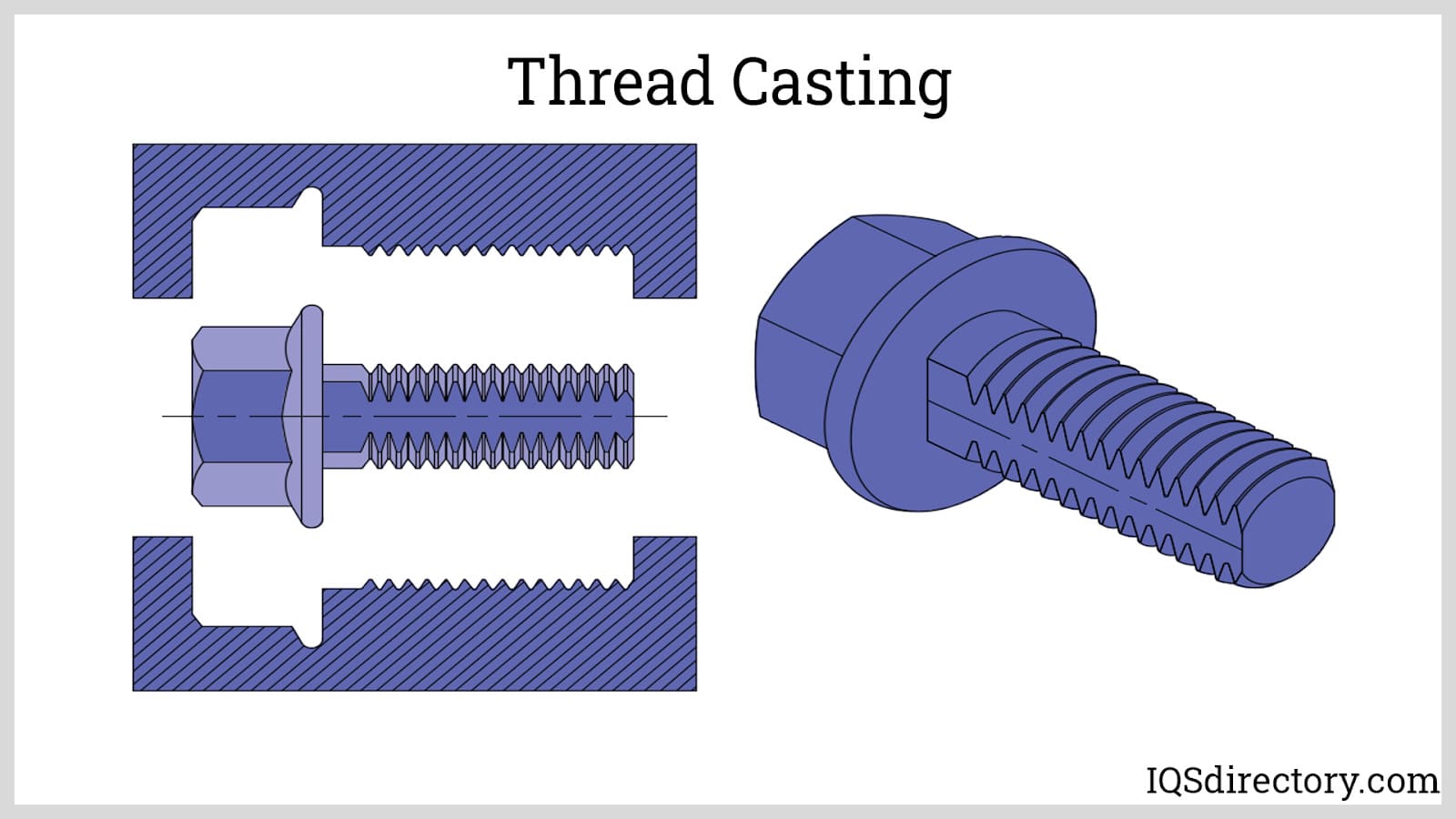
Finally, additive processes are methods of producing threads by gradually adding or depositing materials. These are extensively being used for producing plastic parts. Advancements in technology further extend the process for producing metal machine elements. To produce quality threads, it is used together with secondary processes such as grinding and lapping.
Some of the additive processes are stereolithography, selective laser sintering, and fused filament fabrication:
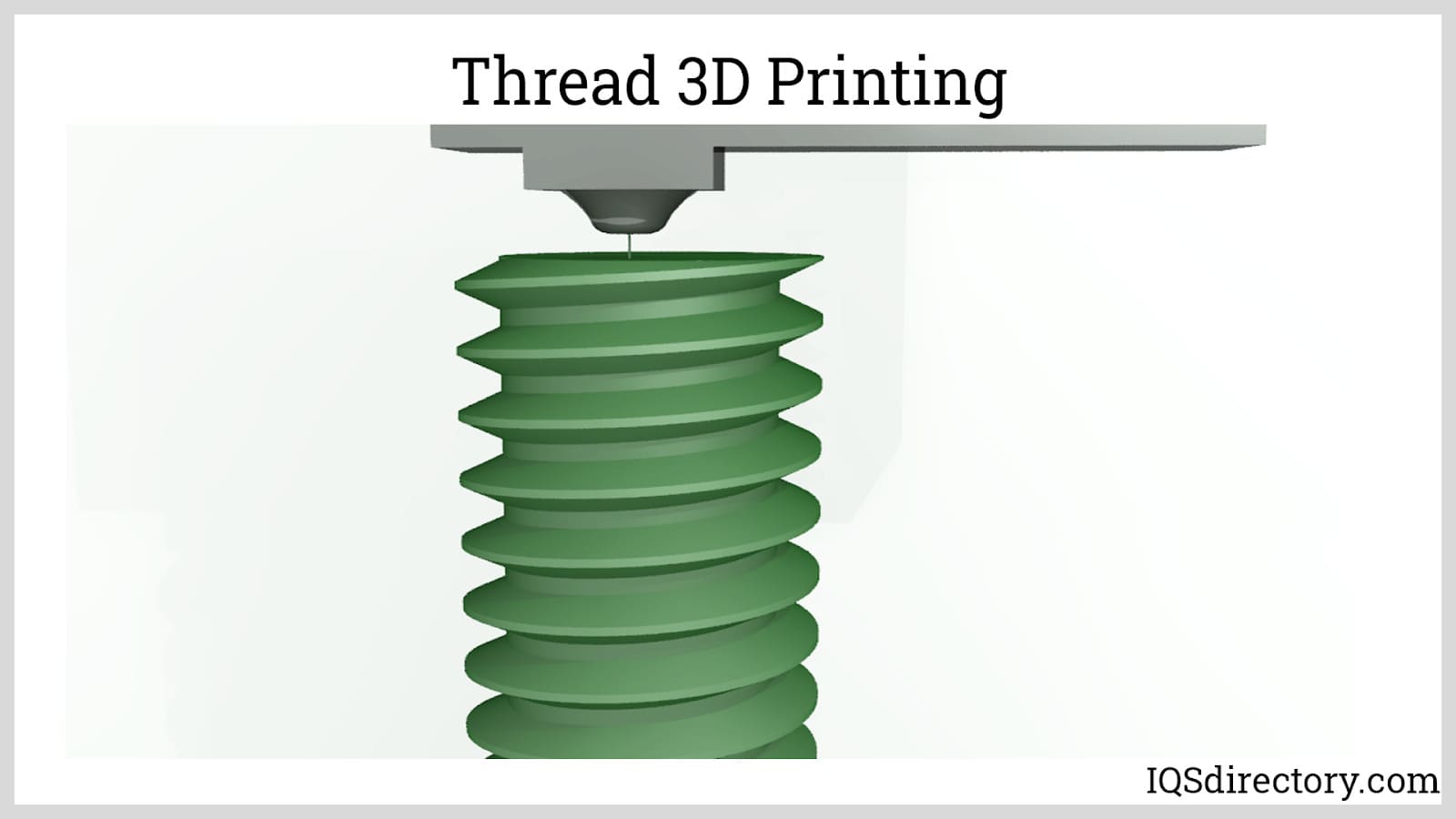
Stereolithography: This is one of the most widely used 3D printing processes for producing plastic parts. This process involves a bath of plastic resin which is cured by a focused beam of light.
Selective Laser Sintering: This process uses a laser beam to sinter powdered material. Plastic is a common material used for the process, but the technology is now gaining ground in producing metal parts.
Fused Filament Fabrication: In this process, a continuous filament of material is melted and extruded to form the desired shape of the part.
Company address:No. 1560-2 chuangxin 2nd road, songbei district, Harbin.
Mailbox:chen@rainbowtechnology.net



No. 1560-2, 2nd chuangxin road, songbei district, Harbin.
+86-451-51066797
WhatsApp/Mobile : +86-18604505477




